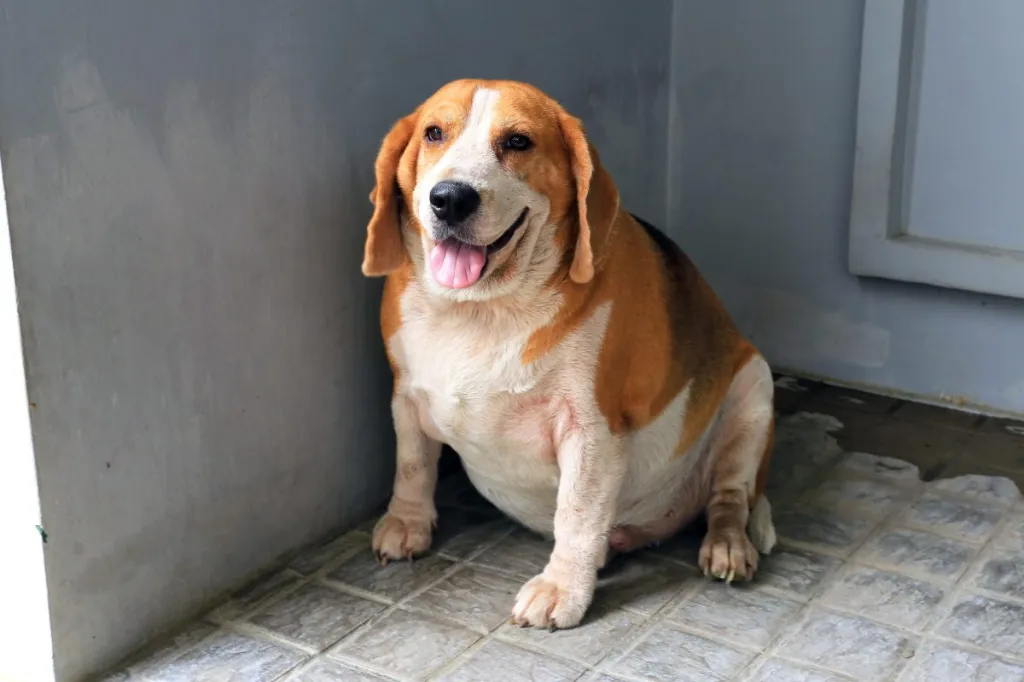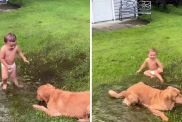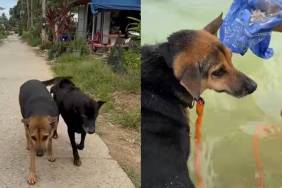Fat is not fit. As with people, overweight dogs are more prone to health problems, such as diabetes, heart disease, and painful joints. Now that you know you need to take action to keep your pup at a healthy weight, how do you do so? After all, Fido still needs to eat. We’re going to get down to the ins and outs of feeding an overweight dog.
How to tell if your dog is overweight
Just look at them. No, seriously. Your dog should have an hourglass figure. When you look down at your dog, you should see a waist, not a block of dog. Put your hands on them. You should be able to feel the ribs easily beneath a layer of muscle and fat. No ribs? Your dog is overweight.
If your dog needs to lose weight, make an appointment with your vet for a checkup and weigh-in. The visit will rule out health problems that can cause weight gain, such as hypothyroidism. The weigh-in will also help you figure out how much weight your dog needs to lose.
Food for overweight dogs
You don’t have to switch to a “diet” food, but you might want to since it means you won’t have to cut back quite as much on the amount you feed your dog. (If it was easy for you to restrict your dog’s food intake, you wouldn’t be in this fix in the first place.) Regardless, your pup will have to eat less, so help them feel satisfied by adding low-calorie, high-fiber foods to their bowl. These can include fresh steamed green beans, low-sodium canned green beans, and plain canned pumpkin. Your dog will still feel as if they’re getting a lot of food; they just won’t be taking in as many calories.
How much food to feed an overweight dog
A diet starts in earnest after you’ve cut back on your dog’s food by one-third to one-half. Stick with this plan until they reach a healthy weight. Be strong. In spite of those pleading looks, your dog will not starve.
Also, keep in mind that the amount recommended on the bag or can of food is only a starting point. Dogs are individuals, and the amount they need to eat depends on a number of factors, including their metabolism, the type of food they eat, their age, how much exercise they get, and the climate where they live. So, after your dog loses the excess pounds, continue adjusting the amount of food they get until you find an amount that can sustain a healthy weight.
When to feed your dog
Make much ado about mealtime by feeding your dog twice a day and sticking to the same times as much as possible. Don’t leave food sitting out the rest of the day. Ask them to sit politely while you prepare their food. Perhaps even consider scheduling their meal so they eat at the same time as the rest of the family.
As for snacks, give your dog one only if they’ve earned it, and make eating it a fun challenge. Try placing some dry food inside a Kong or puzzle toy, such as a Buster Cube. Your dog will have to shake or roll the toy to get the food out. (This works only if there are no other dogs around to tease out the food before your overweight pooch does.) Make sure it’s not too difficult to release the food from the toy. You don’t want your dog to give up in frustration. You can even make them work for one of his regular meals.
Changing the way your dog eats is tough, but ultimately worth it. You’ll be rewarded with a healthier pup to share meals with for years to come!









